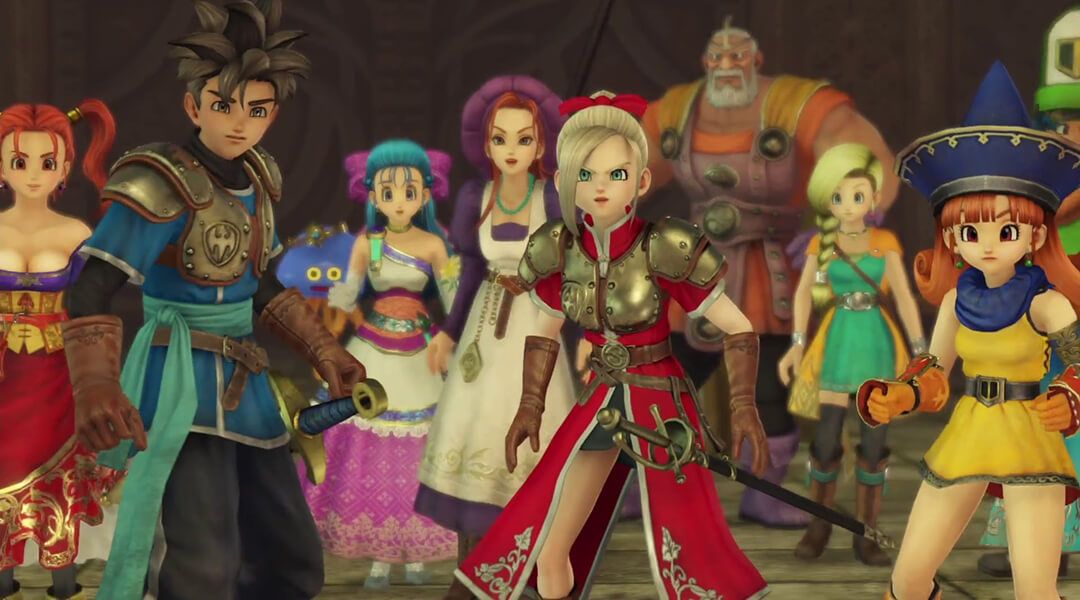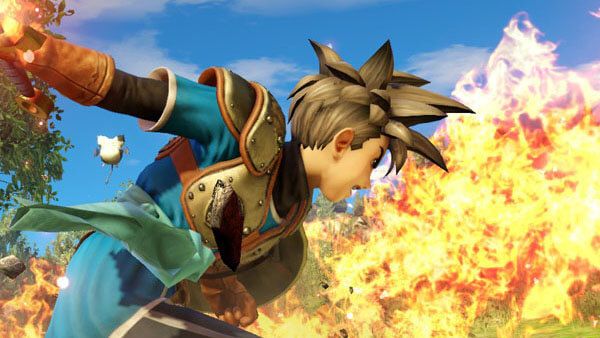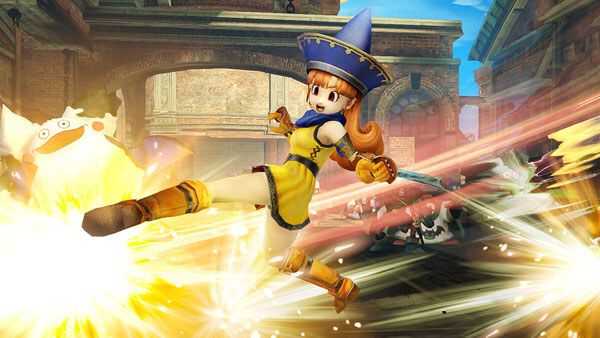Dragon Quest Heroes adds the large-scale hack and slash battles of Dynasty Warriors to the RPG world of Dragon Quest to give new and old fans of the fantasy series endless hordes or adorable monsters to slay.
Omega Force's trend of taking its large-scale combat outside of Dynasty Warriors and into other popular franchises kicked off with Nintendo's Hyrule Warriors, but it's possible that the lack of love for the Wii U console held the game back from becoming a major hit. Dragon Quest Heroes is now available in North America on the PS4 and a larger audience of console gamers are able to see how the Omega Force combat system feels outside of its usual home. In the case of Dragon Quest Heroes, it seems like there is plenty to like about the upgraded button-mashing brawls.
For gamers who are unfamiliar with either franchise, there are a few things to explain. Dragon Quest is a Square Enix RPG series dating back to the '80s and Dynasty Warriors is an action series built around pinning an overpowered protagonist against enormous hordes of enemies. Dragon Quest Heroes slaps that combat system onto the cartoon-y RPG world and allows players to send fighters and magic users into battle in a totally new way.
The game's story is fairly black and white: the homeworld of the multiple protagonists is populated by friendly monsters who are suddenly overpowered by an evil wizard and forced to attack their friends and owners. The heroes battle hordes of adorable monsters (and the occasional giant or dragon) while flying around the world and trying to put a stop to the chaos. The generic story benefits from the fact that it doesn't take itself very seriously at all. The game focuses on comedy rather than drama, and many of the cheesy jokes will land just as well with new players as they would with veterans of the Dragons Quest franchise. That being said, each character has a very narrow personality with one defining characteristic, so the repetitive jokes will get old before players make it through the game's 30 or 40 hours.
Luckily, the combat is the focus of the game, rather than the mediocre story. Players have one central character who is chosen during the game's opening tutorial, but a party of four fighters is quickly formed. Different characters from Dragon Quest's history are added to the list of playable characters throughout the game and each one brings unique attacks and special magic to the table. Players enter the battlefield with a team of four and have the ability to jump between the fighters at any time, while the other three fighters are controlled by AI.
For the most part, Dragon Quest Heroes' combat encounters are fairly straightforward. Each character has a light and heavy attack that can be strung together in combos to build up Tension. Once the Tension meter is full, the player can unleash an extra powerful attack that is able to stun even the largest enemies. The combat is definitely a little button mashy, but luckily there is some strategy required to complete each encounter successfully. The battles last just about 15 minutes each, which is on the short end compared to the typical Dynasty Warriors games, but for many gamers this might actually be seen as an improvement.
The main strategy comes in the form of defending central bases on each level. This mechanic has been used in some previous Dynasty Warriors games, but never to the extent that it is used in Dragon Quest Heroes. Almost every fight has some central base that is under attack from enemies at multiple paths. This means that the player cannot simply rush across the battlefield killing everything. Usually, players need to move forward and then retreat to keep things safe from both (or all) angles. This task motivates players to keep an eye on the map at all times and approach each battle with a strategic eye. Luckily, the rotating team of four has some help in defending the objectives.
Players also have the ability to summon some defeated enemies back to fight alongside the heroes. Some enemies drop monster coins when they are defeated, which can be picked up and used as a resource to call them into battle. The protagonist can carry six slots worth of monster coins at a time. As you might have guessed, bigger monsters take up more coin slots, which adds an interesting layer of complexity to the combat, as players need to decide which coins are worth picking up and where the best place to unleash a monster might be. In some levels it might make sense to save a massive golem until a more challenging enemy appears, but in others it is a better move to unleash the the golem at the home base, so that the massive monster can defend it while the team ventures down another lane.
One downside to Dragon Quest Heroes is the RPG aspect of the game. Players do have the ability to upgrade weapons, skills, and stats, and loot that is acquired during battles can be sold or taken to the alchemist to turn into something more valuable. Unfortunately, these interludes really slow down the action and feel tedious. The battles are a little too short to need a long break between them and after a 15 minutes throw down, we usually felt ready to jump right back into another, rather than watch a cut scene, sell some items, buys some items, then watch another cut scene. If the pacing of the game's narrative and marketplace matched the pacing of the game's combat system and encounters, then it would be much harder to put the controller down.
Dragon Quest Heroes demonstrates that the Dynasty Warriors combat system can work in other universes and even manages to make some exciting improvements to the usual formula. The game's story is likely to leave new players a little bored, but longtime fans of the franchise will have plenty of run-ins with old characters to trigger those nostalgic feels. Either way, there is a lot of fun to be had with this one.
Dragon Quest Heroes is now available for PS4. Game Rant was provided a copy for this review.



